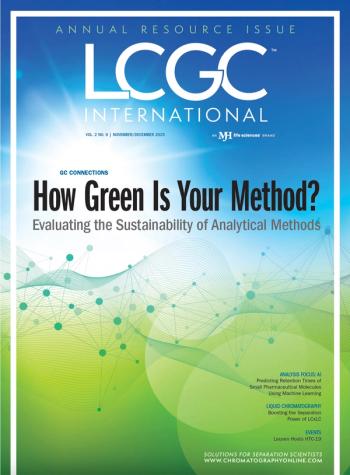
- The Column-02-03-2014
- Volume 10
- Issue 2
Archaeochemical Evidence Uncovers Nordic "Grog"
Scientists in the USA have carried out an investigation into the variety of beverages enjoyed by the Northern Bronze and Iron Age peoples before written records began using a combination of analytical chemical techniques.1
Scientists in the USA have carried out an investigation into the variety of beverages enjoyed by the Northern Bronze and Iron Age peoples before written records began using a combination of analytical chemical techniques.1
Led by Patrick E. McGovern from the University of Pennsylvania Museum of Archaeology and Anthropology, Pennsylvania, USA, the team analyzed the residues found on pottery and bronze vessels taken from four different sites in Denmark and Sweden. The vessels ranged in age from approximately 1500 BC to the first century AD.
The team found that the preferred beverage was a hybrid or “grog” consisting of a fermented mixture of honey, fruit (bog cranberry and lingonberry), and cereals (wheat, rye, and/or barley), and, sometimes, grape wine. The compounds were identified by Fourier-transform infrared spectrometry (FT–IR); gas chromatography–mass spectrometry (GC–MS); ultrahigh-pressure liquid chromatography (UHPLC) tandem MS; and headspace solid-phase microextraction (SPME) coupled to GC–MS.
Of particular note was the presence of grape wine, imported from further south in Europe. According to the authors of the paper, this has an important cultural significance as it demonstrates the social and ceremonial prestige attached to wine. In addition, it also indicates an active trading network across Europe as early as the Bronze Age.
Classical writers would often depict the Northern-dwelling inhabitants as savages. McGovern commented: “Far from being the barbarians so vividly described by ancient Greeks and Romans, the early Scandinavians emerge with this new evidence as a people with an innovative flair for using available natural products in the making of distinctive fermented beverages. They were also not averse to importing and drinking the southern beverage of preference, grape wine, though sometimes mixed with local ingredients.” This is the first time that the import of grape wine in this era has been chemically proven. - K.M.
Reference
Patrick E. McGovern et al., Danish Journal of Archaeology DOI: 10.1080/21662282.2013.867101 (2013).
This article first appeared in The Column. Click
Articles in this issue
almost 12 years ago
Protecting the Consumeralmost 12 years ago
Food for Thought: RAFA 2013 Reviewalmost 12 years ago
Glycans Marker for Gastric Canceralmost 12 years ago
Soluble Fraction Analysis in Polypropylenealmost 12 years ago
Tips & Tricks GPC/SEC: How to Install GPC/SEC Columnsalmost 12 years ago
Pittcon 2014 Previewalmost 12 years ago
Vol 10 No 2 The Column February 03, 2014 North American PDFalmost 12 years ago
Vol 10 No 2 The Column February 03, 2014 Europe and Asia PDFalmost 12 years ago
GC–MS investigates cheese made from human bacteriaNewsletter
Join the global community of analytical scientists who trust LCGC for insights on the latest techniques, trends, and expert solutions in chromatography.



